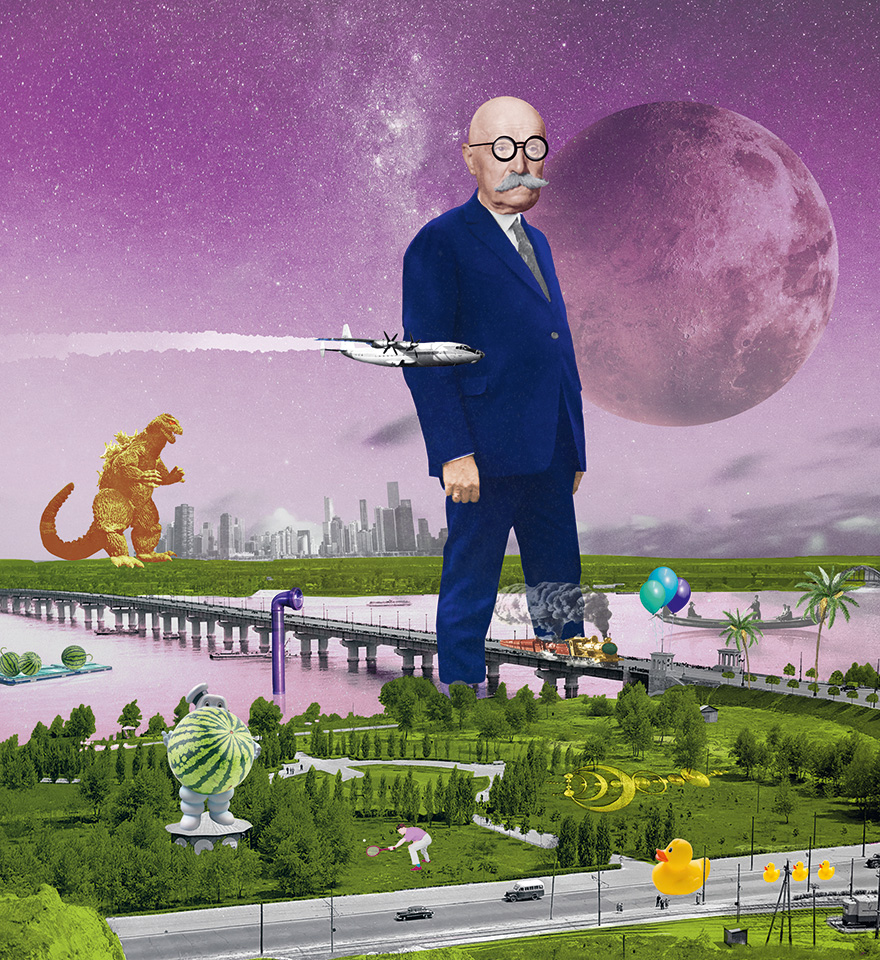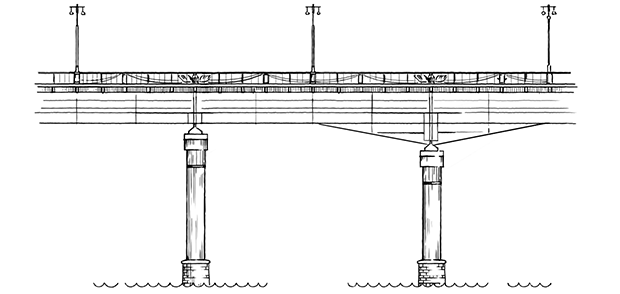PatonEugene
March 5, 1870, Nice, France —
August 12, 1953, Kyiv, USSR (now Ukraine)
All-welded bridge
There are a lot of legends about the bridge, which has been connecting Kyiv’s right and left banks since 1953. One of these legends is that it’s one of the first world’s all-welded bridges. In fact, in 1930-s, engineers from different countries of the world had built at least a dozen all-welded bridges. Like that...

Why did the American Welding Society, which has been bringing together welding specialists all over the world have recognized the Paton Bridge as a unique welded construction of the 20-th century?
While studying at the engineering department of the Dresden Polytechnic Institute in Germany, Eugene Paton decided to become “a Bridge Builder”. At that time in the Russian Empire the construction of railways was in full swing and looking through the map, he saw thousands of large and small rivers through which it was still necessary to build railway bridges. So the son of the Russian consul (that is why Paton spent the first part of his life in Europe) rejected the proposals of German companies and returned to St. Petersburg, and eventually moved to Kyiv.
The first bridges, designed by Paton, had not welded, but riveted connections. At that time, the bridges’ metal elements were connected just with hundreds of thousands and even millions of rivets, which were installed by workers’ hands. Paton was searching for a better decision, but it was of no effect until in 1928, during one of his business trips he saw the work of an electric welder. So, he got an idea, he dreamed of, that welding could be the way of connecting two parts of the bridges. Paton was so inspired by this idea, so at the age of 59 he decided to go in for studying and developing welding technology. Later he recalled: “At the Bolshevik Plant, where there was a welding shop, they gladly came to meet me and made me some place in this shop, or rather, a small room, which became loudly called “Paton’s laboratory”.
But then welding, as riveting, was done by hand, so Paton’s team set out to create a welding machine. In 1940, the high-speed welding machine was ready. While the experienced welders welded about 15 meters of metal per hour by themselves, the machine welded 30 ones at the same time. It was time to return to bridge construction — Paton was overcome with the idea of building a welded bridge in Kiev across the Dnipro.
When the project was posted, a crowd of critics appeared. At that time all-welded bridges failed one after another abroad — in Brussels (Belgium) in less than five years, all four bridges broke, the same thing happened with two bridges in Germany. The project had to be defended and proved that the cause of the disasters was not welding as a method of connection, but that bridges were welded by hand. Other reasons were incorrectly selected stamps and imperfect constructions. At last the first secretary of the Central Committee of the Communist Party of Ukraine, Nikita Khrushchev, intervened in the dispute, and it was decided to build a new bridge.
When supports were already installed across the Dnieper, and part of the spans were welded at the Dnipropetrovsk plant, World War II began and construction had been stopped. From September 19, 1941 to November 6, 1943, Kyiv was under occupation. So the German military built a temporary bridge on the poles sticking out of the water.
The bridge construction was restored only in 1950 under renewed project. The old pillars were blown up, and its construction began virtually from scratch. At first the bridge was planned to be called “Kyiv”, but at the end was named after Paton, especially since the engineer managed to see the bridge completed, but didn’t stay alive to see its opening.

Paton Bridge in Kyiv
To test the bridge strength a column of heavy
The Paton Bridge was opened on October 5, 1953. Eugene Paton’s son Boris Paton was the first who crossed it.
1 543 meters long and 27 meters wide. It was the first all-welded bridge, all elements of which were connected by high-speed welding and at that time was the largest in the world of all all-welded ones.
Critics’ expectations were failed — the bridge has been standing for almost 70 years.